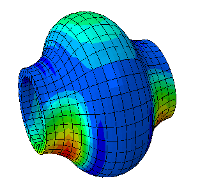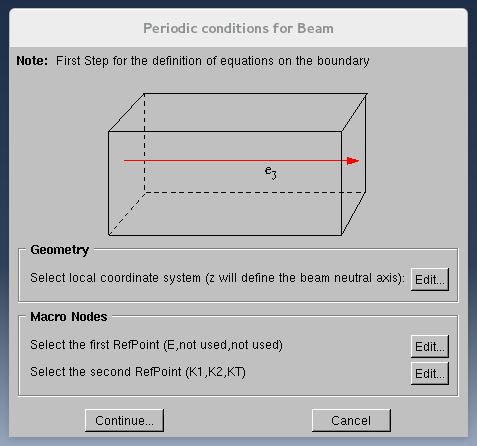Heterogeneous Structures

Heterogeneous Periodic Beams
This functionnality is relevant for heterogeneous beams that are periodic in the direction of their axis. In that case, a periodicity cell can be defined, together with a periodicity vector which is parallel to the beam axis. The kinematics of the effective beam model is the one of Navier-Euler-Bernoulli (no transverse shearing). Four effective generalized strains are considered : the normal strain, the two bending strains and the twisting strain. The associated effective generalized stresses are the normal stress, the bending moments and the twisting moment. Homtools allows to prescribe an average loading in terms of these effective strains or stresses (or any independent combination of them) on the 3D periodicity cell. It requires non-classical boundary conditions that can be written as linear constraints between the displacements at each point on the boundary of the periodicity cell and the average strains.
Homtools uses Reference Points to prescribe the average loading and these constraints.
Heterogeneous Periodic Plates
Under construction
Macro nodes and Reference axis or plane
As in the case of material homogeneisation, reference nodes needs to be added to the model. The degree of freedom of these nodes are associated to the generalized strains. Linear relation (*equation) will automatically be generated by Homtools between the reference nodes and all the mesh nodes that are selected by the users as boundary nodes. However, users also need to define an axis (for beam) or a plane (for plates) which will be used as the neutral axis or plane to define the effective generalzed strains and stresses.Here is a sample of the GUI for beam:





